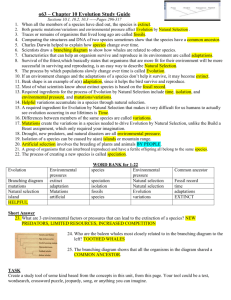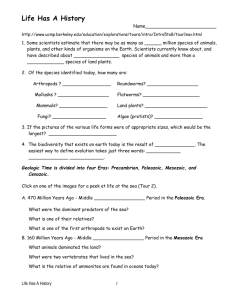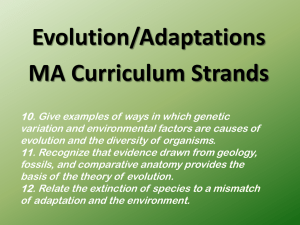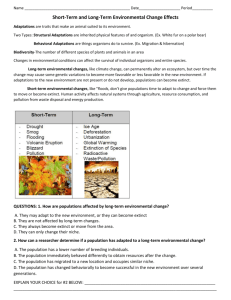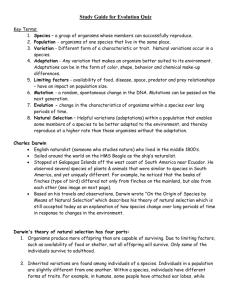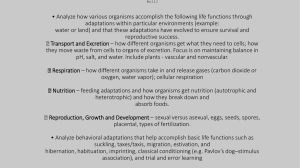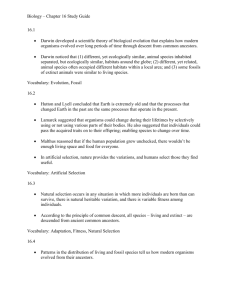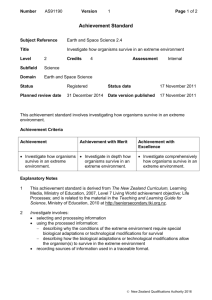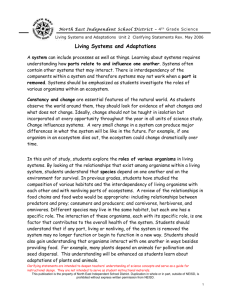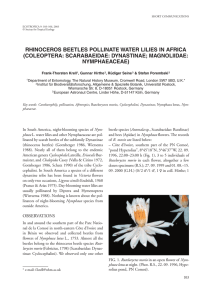Evolution Study Guide
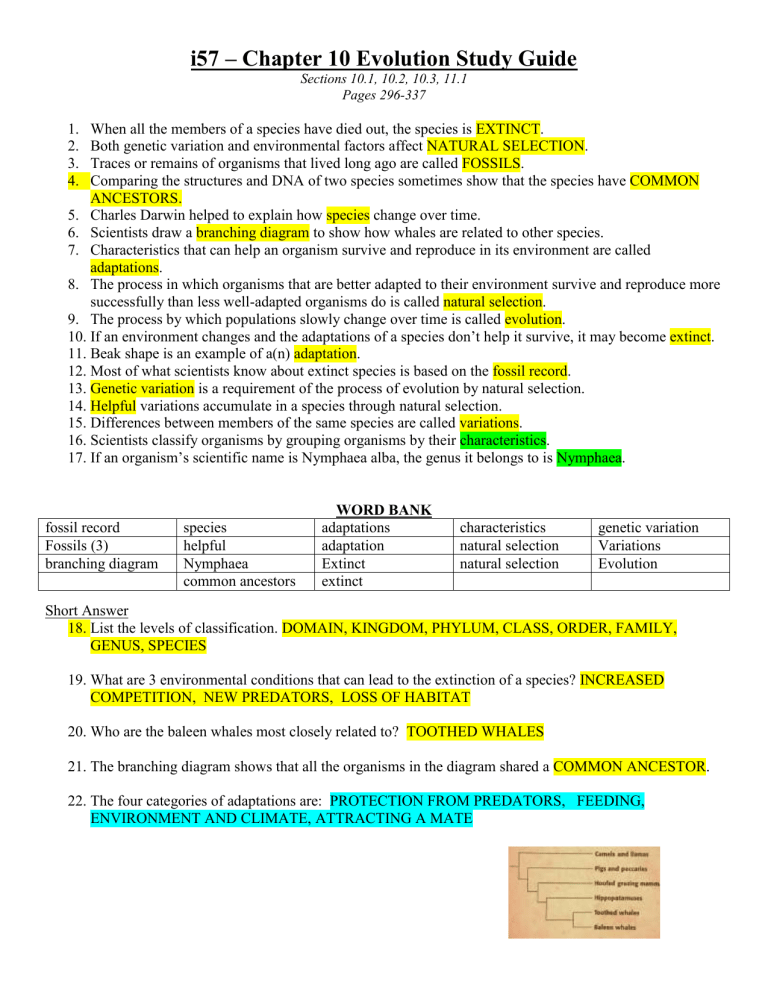
i57 – Chapter 10 Evolution Study Guide
Sections 10.1, 10.2, 10.3, 11.1
Pages 296-337
1.
When all the members of a species have died out, the species is EXTINCT.
2.
Both genetic variation and environmental factors affect NATURAL SELECTION.
3.
Traces or remains of organisms that lived long ago are called FOSSILS.
4.
Comparing the structures and DNA of two species sometimes show that the species have COMMON
ANCESTORS.
5.
Charles Darwin helped to explain how species change over time.
6.
Scientists draw a branching diagram to show how whales are related to other species.
7.
Characteristics that can help an organism survive and reproduce in its environment are called adaptations.
8.
The process in which organisms that are better adapted to their environment survive and reproduce more successfully than less well-adapted organisms do is called natural selection.
9.
The process by which populations slowly change over time is called evolution.
10.
If an environment changes and the adaptations of a species don’t help it survive, it may become extinct.
11.
Beak shape is an example of a(n) adaptation.
12.
Most of what scientists know about extinct species is based on the fossil record.
13.
Genetic variation is a requirement of the process of evolution by natural selection.
14.
Helpful variations accumulate in a species through natural selection.
15.
Differences between members of the same species are called variations.
16.
Scientists classify organisms by grouping organisms by their characteristics.
17.
If an organism’s scientific name is Nymphaea alba, the genus it belongs to is Nymphaea. fossil record species
Fossils (3) helpful branching diagram Nymphaea
WORD BANK adaptations adaptation
Extinct characteristics natural selection natural selection genetic variation
Variations
Evolution common ancestors extinct
Short Answer
18.
List the levels of classification. DOMAIN, KINGDOM, PHYLUM, CLASS, ORDER, FAMILY,
GENUS, SPECIES
19.
What are 3 environmental conditions that can lead to the extinction of a species? INCREASED
COMPETITION, NEW PREDATORS, LOSS OF HABITAT
20.
Who are the baleen whales most closely related to? TOOTHED WHALES
21.
The branching diagram shows that all the organisms in the diagram shared a COMMON ANCESTOR.
22.
The four categories of adaptations are: PROTECTION FROM PREDATORS, FEEDING,
ENVIRONMENT AND CLIMATE, ATTRACTING A MATE
